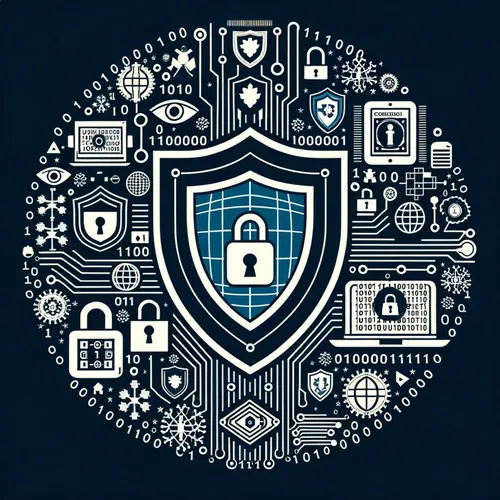Sizzling Cyber Standoff: US Strikes Back as China Hacks Heat Up! Senate Seeks Scary Deterrence
- Author
- Quiet. Please
- Published
- Fri 11 Jul 2025
- Episode Link
- https://www.spreaker.com/episode/sizzling-cyber-standoff-us-strikes-back-as-china-hacks-heat-up-senate-seeks-scary-deterrence--66947545
This is your Tech Shield: US vs China Updates podcast.
Alright listeners, Ting here—your favorite cyber sleuth with the lowdown on Tech Shield: US vs China. If you’ve been watching the news, you know this week’s cyber battlefield has been anything but quiet, so buckle up.
Let’s jump right into the Capitol: the Senate Armed Services Committee just unleashed a proposal that would force the Pentagon to build a clear deterrence strategy targeting Chinese cyber strikes on critical infrastructure. If you’ve ever heard the names Volt Typhoon or Salt Typhoon, you know how real this gets. Volt Typhoon was famously caught snooping in U.S. port networks, basically using digital jiu-jitsu—“living off the land” with legit admin tools to hide in plain sight. Their latest move? Not just stealing secrets but holding entire utilities and ports at risk. If you ever wondered why Guam is in the headlines, that’s why: it’s become the cyber bullseye for Beijing’s hackers, aiming to hobble U.S. mobilization if Taiwan ever gets dicey. Salt Typhoon, meanwhile, lurks in telecom and corporate networks, all espionage, all the time. Senators are desperate for deterrence that actually scares China. Historically, deterrence in cyberspace has been about as reliable as a cheap VPN—adversaries just aren’t scared of getting caught.
Meanwhile, the Department of Justice just dropped the velvet gloves. Its data security program enforcement is now in full swing after a 90-day grace period ended this week. Companies must prove they’ve locked down sensitive data, especially from so-called countries of concern—yes, China’s front and center. If you’re not on top of access logs, third-party vendors, and airtight compliance programs, expect to have some awkward conversations with the DOJ—and possibly the SEC. Think of it as the ultimate homework assignment: every company must be audit-ready, risk assessments in hand, by October.
On the ground, CISA’s cyber defense drills are back in America’s ports—Savannah, Charleston, Wilmington and maybe Tampa. With Chinese hackers already deploying AI-driven attacks, it’s high time. Ports are mostly privately owned, so these exercises aim for a public-private partnership playbook everyone can use. Houston, for example, has already swatted off attempts, but the threat level keeps rising thanks to Chinese hardware embedded almost everywhere in the supply chain.
Over in Washington, nerves are fraying over whether Congress will renew the Cybersecurity Information Sharing Act of 2015 before it sunsets. GAO just confirmed this decade-old law—think of it like the digital Bat-Signal—has enabled fast, private-public sharing of real cyber threat info, supercharging defense. If it lapses, legal exposure could make companies clam up, the threat landscape could go dark, and everyone—from energy to healthcare—would be flying blind, just as China’s hackers are getting nastier and more AI-savvy.
And speaking of AI: U.S. Cyber Command just earmarked $5 million for a fresh initiative in its 2026 budget aimed at fusing artificial intelligence into operational cyber defense. It’s a small slice of the pie, but shows how much faith they’re putting in automation for real-time threat detection and incident response.
Expert commentary? The tools and strategies are advancing—AI, real-time sharing, drills galore—but the patchwork of ownership, regulation gaps, and aging infrastructure creates plenty of holes. Until there’s a true culture of “cyber hygiene” and seamless cooperation, America’s digital armor will have chinks. But hey, if there’s a positive—these moves are giving China a run for their Renminbi.
Thanks for tuning in—subscribe for more, your network depends on it! This has been a quiet please production, for more check out quiet please dot ai.
For more http://www.quietplease.ai
